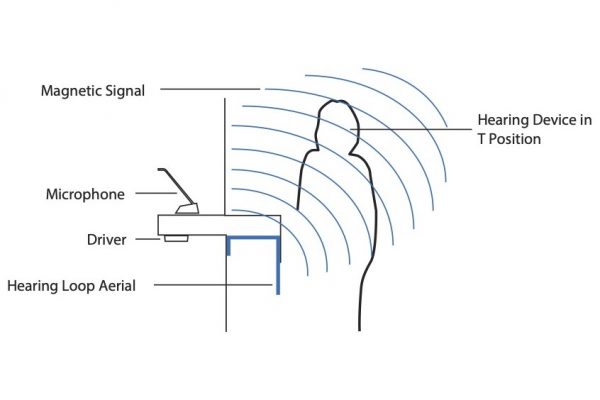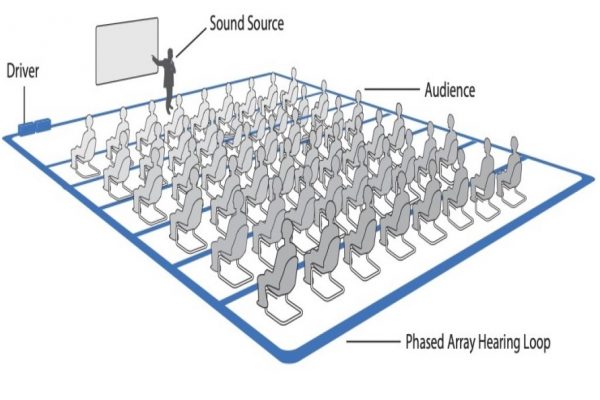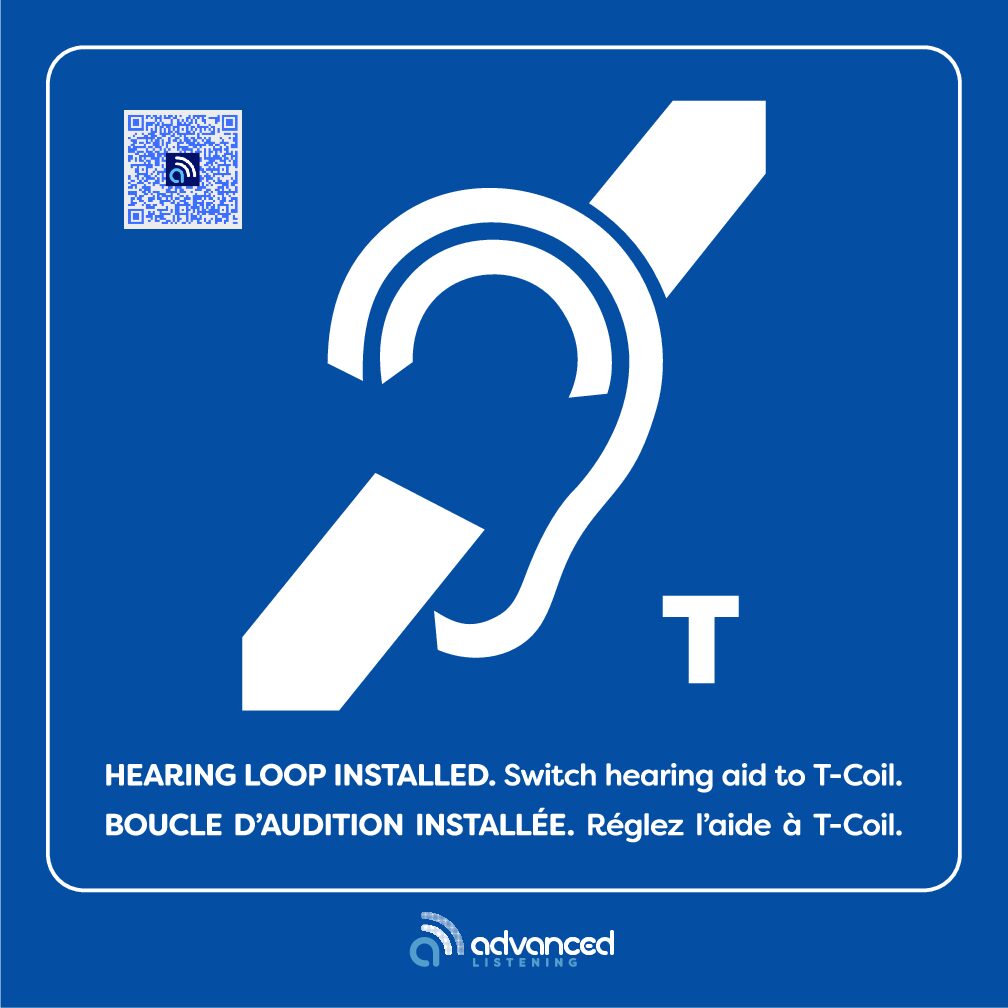All assistive listening technologies require 2 things, an audio source and a means of transmitting that audio wirelessly. The audio source can be a microphone, PA system, or even the audio from a television.
The three most widely used assistive listening systems are: Induction Loop, RF Systems and SoundField Systems. All three listening system technologies have their uses, but it is important to understand their pros and cons before selecting the system that is right for your needs.





